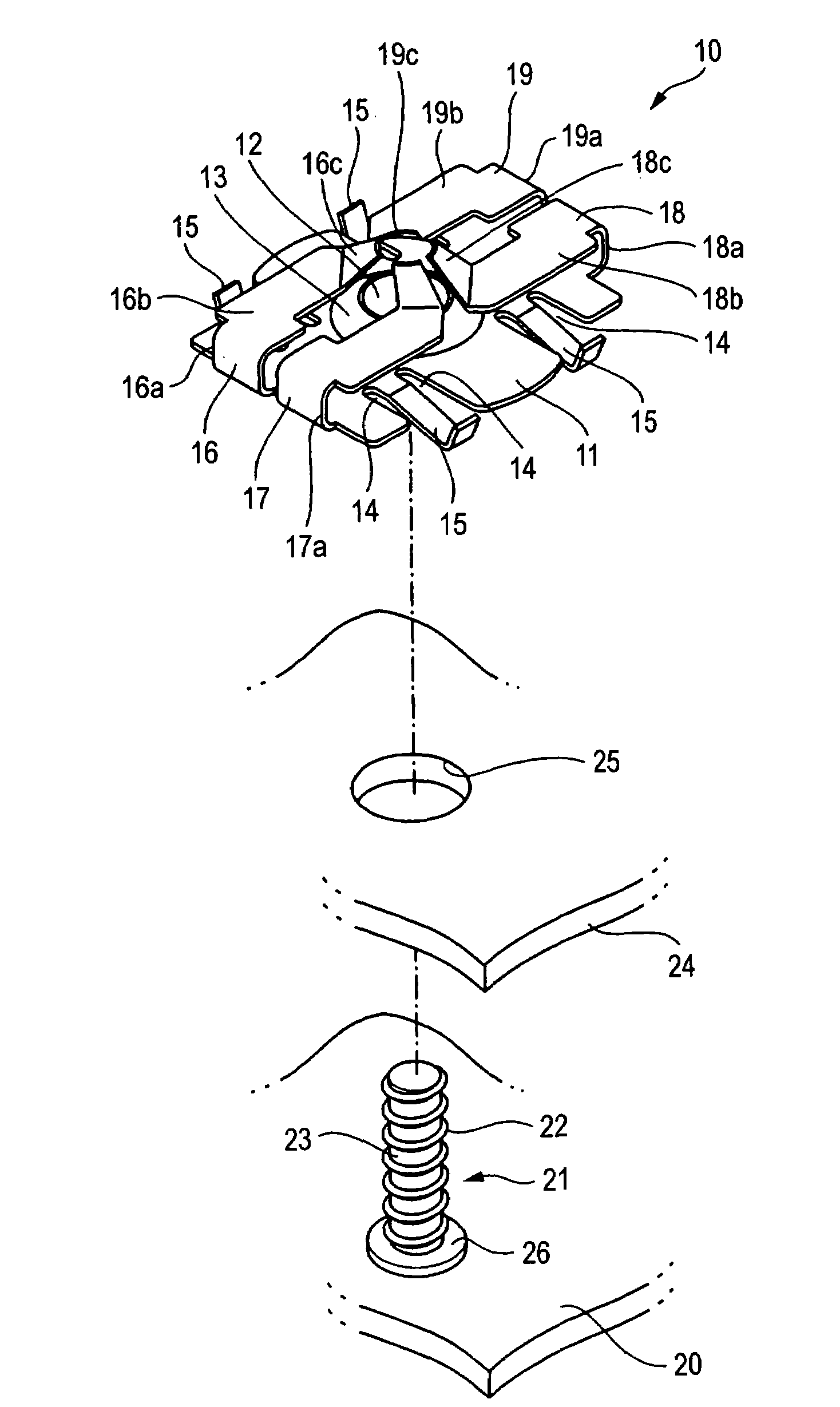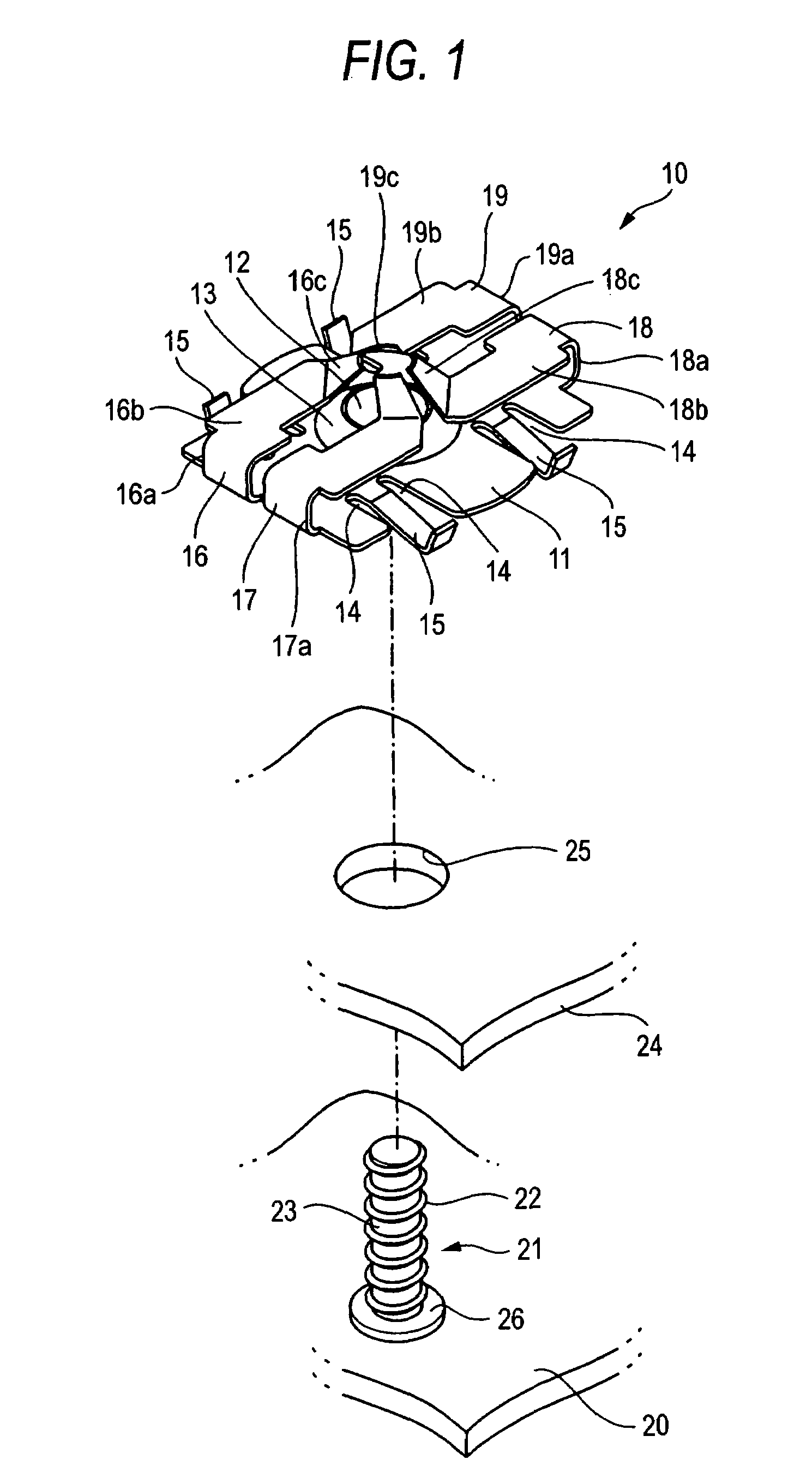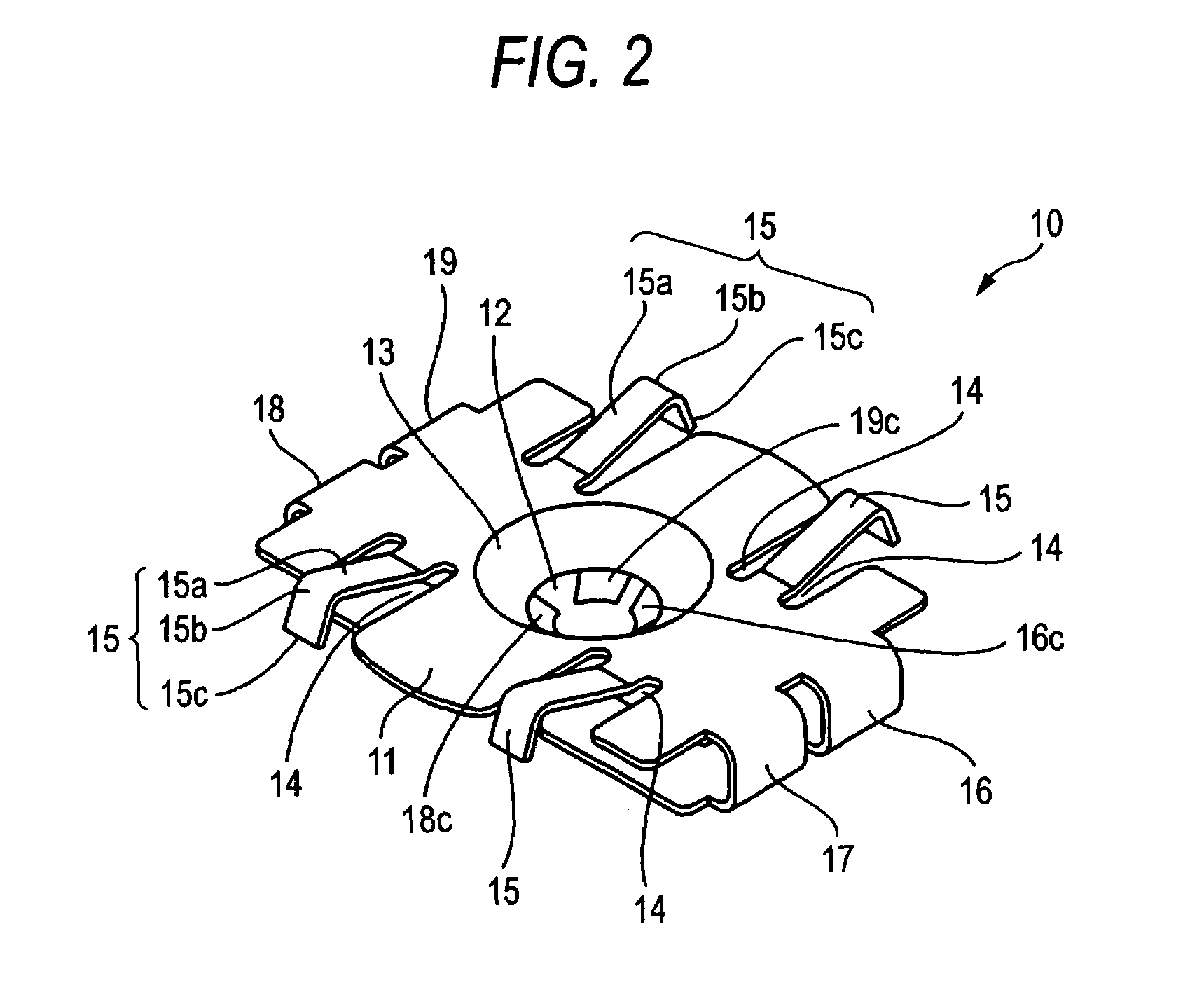Push nut
a technology of push nuts and nut ends, which is applied in the direction of threaded fasteners, fastening means, mechanical devices, etc., can solve the problems of difficult work, low material yield, and hardly conducted press molding, so as to reduce the resistance of insertion onto the bolt, prevent insertion of the insertion of the insertion, and enhance the elastic force of the engaging piece
- Summary
- Abstract
- Description
- Claims
- Application Information
AI Technical Summary
Benefits of technology
Problems solved by technology
Method used
Image
Examples
Embodiment Construction
[0028]Hereinafter, an embodiment of the invention will be described with reference to the drawings.
[0029]FIG. 1 is a perspective view showing a state where an attached plate is attached to a panel using a push nut which is an embodiment of the invention. FIG. 2 is a perspective view of the push nut as viewed from the side of the lower face. FIG. 3A is a front view of the push nut, and FIG. 3B is a rear view of the push nut. FIG. 4A is a plan view of the push nut, and FIG. 4B is a bottom view of the push nut. FIG. 5A is a right side view of the push nut, and FIG. 5B is a left side view of the push nut.
[0030]FIG. 6A is an end view of the push nut taken along the arrow line A-A of FIG. 3A, and FIG. 6B is an end view of the push nut taken along the arrow line B-B of FIG. 3A. FIGS. 7A and 7B are views illustrating a state where the attached plate is to be fixed to the panel using the push nut. FIG. 8 is a section view showing a state where the attached plate is fixed to the panel using t...
PUM
 Login to View More
Login to View More Abstract
Description
Claims
Application Information
 Login to View More
Login to View More - R&D
- Intellectual Property
- Life Sciences
- Materials
- Tech Scout
- Unparalleled Data Quality
- Higher Quality Content
- 60% Fewer Hallucinations
Browse by: Latest US Patents, China's latest patents, Technical Efficacy Thesaurus, Application Domain, Technology Topic, Popular Technical Reports.
© 2025 PatSnap. All rights reserved.Legal|Privacy policy|Modern Slavery Act Transparency Statement|Sitemap|About US| Contact US: help@patsnap.com



